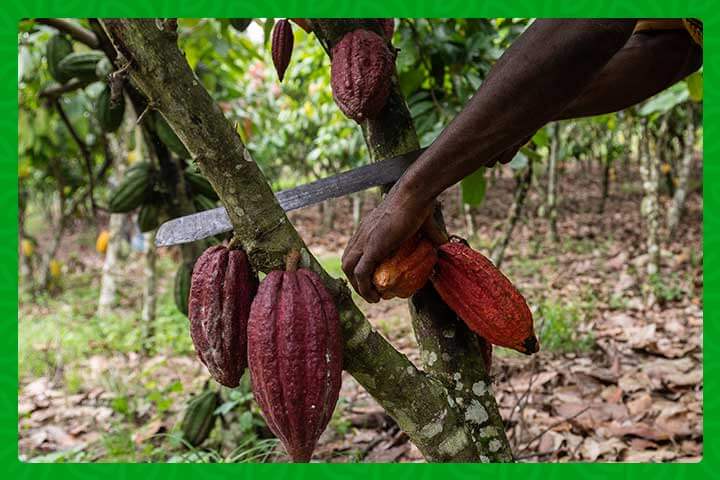
Chocoholics beware, the world of chocolate may be facing another jolt as concerns mount over a potential cocoa crop shortage in Ghana and Ivory Coast, the top cocoa-producing regions. The chocolate industry, already grappling with rising costs, is bracing itself for the possibility of further price hikes.
A Bitter Surge in Cocoa Prices
In the past year, cocoa prices have skyrocketed by approximately 47%. This surge is driven by mounting concerns over adverse weather conditions and crop diseases afflicting the cocoa fields of Ivory Coast and Ghana, which collectively account for two-thirds of the world’s cocoa supply.
Adding to the apprehension is the looming El Niño weather phenomenon, with analysts predicting a third consecutive global cocoa shortage in the new season. This could result in continued inflation in the chocolate sector, impacting both European markets and the burgeoning Asian consumer base.
“The current situation is looking relatively dire unless there is a dramatic improvement in the outlook. Further price increases could weigh on consumption,” warns Darren Stetzel, Vice President of Soft Commodities for Asia at broker StoneX.
Historic Highs and Uncertain Harvests
New York cocoa futures reached a 12-year high in mid-September, nearly touching a price last seen in 1979. This surge can be attributed to a trifecta of challenges: excessive rainfall, pest infestations, and crop diseases plaguing West African cocoa crops.
The pressing question revolves around the size of the larger of the two annual cocoa harvests, recently initiated in Ghana and soon to commence in Ivory Coast. Ivory Coast had initially forecasted a nearly 20% decrease in output from the main-crop season running from October 1 to March. However, final figures remain uncertain as some farmers held back supplies from the smaller mid-crop in anticipation of higher prices in the new season.
Gloomy Projections and Scarce Resources
Experts at Rabobank and Marex anticipate a drop in West African cocoa output for the 2023-24 season, with Marex projecting a global deficit of 279,000 tons, surpassing the combined shortfalls of the previous two seasons.
Agricultural inputs, such as fertilizers and pesticides, have become scarcer and more expensive for African cocoa farmers, many of whom struggle to make ends meet. This predicament hinders efforts to rejuvenate or treat damaged cocoa trees and combat the swollen-shoot disease, which poses a significant threat to Ivory Coast’s cocoa output, affecting roughly 20% of the nation’s crop.
Ghana’s Gambit and Aging Trees
In contrast, Ghana has taken a bold step by boosting cocoa farmer pay by over 60% to deter smuggling into Ivory Coast and encourage investment. While this may lead to increased cocoa production in Ghana, the country also grapples with aging cocoa trees, potentially contributing to a declining production trend.
A Taste of Impact
The tight supply chain in the cocoa market has led to reduced processing of cocoa beans into confectionery products worldwide. High cocoa prices are beginning to impact demand in Asia, with Swiss grinder Barry Callebaut AG reporting lower sales in July.
The world of chocolate stands at a crossroads, with cocoa prices scaling unprecedented heights and cocoa crop shortages looming large. As cocoa enthusiasts brace for potential price hikes, the global chocolate industry faces the challenge of navigating a complex cocoa supply chain in a world fraught with uncertainties. The fate of the sweet treat hangs in the balance as cocoa producers and chocolate manufacturers grapple with the harsh realities of a cocoa crisis.
Stay updated with the latest farming tips and agriculture industry news from Africa by subscribing to our newsletter. Don’t miss out on valuable insights and updates. Follow us on Twitter, LinkedIn, and Facebook to join our farming community and stay connected with us.



















